
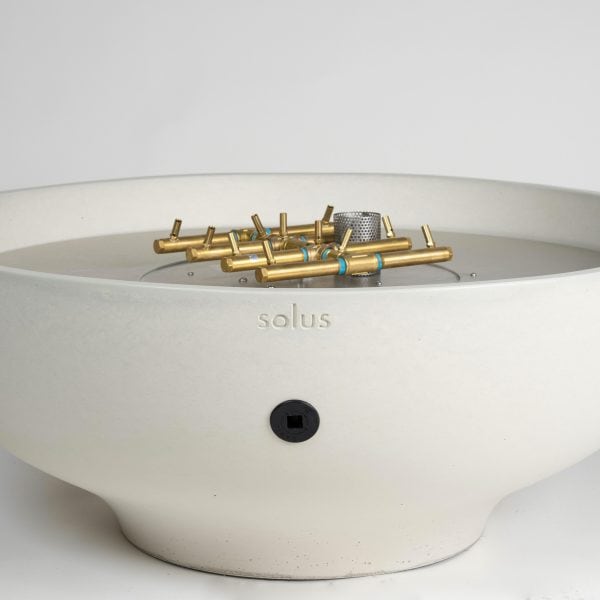
Save Thousands
Solus is relocating (not far), and as a result, we are offering significant discounts on sample displays and ‘seconds,’ with items ranging from 30-75% off. Check out our moving warehouse sale items.

Comparing Solus Decor’s Ultra High Performance Concrete (UHPC) to Glass Reinforced Concrete (GFRC) in terms of Compressive Strength, Finish Quality and Longevity for modern outdoor fire pits, fire bowls and fire tables.
“Typical” concrete that you may find on a gymnasium floor or on a driveway is NOT suitable for outdoor fire and water features. However, GFRC manufacturers will often compare it to their concrete in an effort to emphasize its attributes. The type you might find on a gymnasium floor or typical construction site would measure its compressive strength somewhere between 2,500 – 4,000 psi. Although GFRC is typically stronger, the same visible level of quality is often apparent. For example, chunky and rough hewn appearance is common amongst many fire pit manufacturers. Companies such as Elementi, American Fyre, Wayfair and many others are GFRC providers. In fact, most “concrete “ fire pit and fire table manufacturers are GFRC.
Solus fire pits and water features are not made of common concrete or GFRC. Our products are made of Ultra High Performance Concrete (UHPC). In this article, we will delve into a comparison focused on the compressive strength of these types of concrete, highlighting their respective attributes. Additionally, we will explore the finish level (the aesthetics) of the UHPC concrete itself.
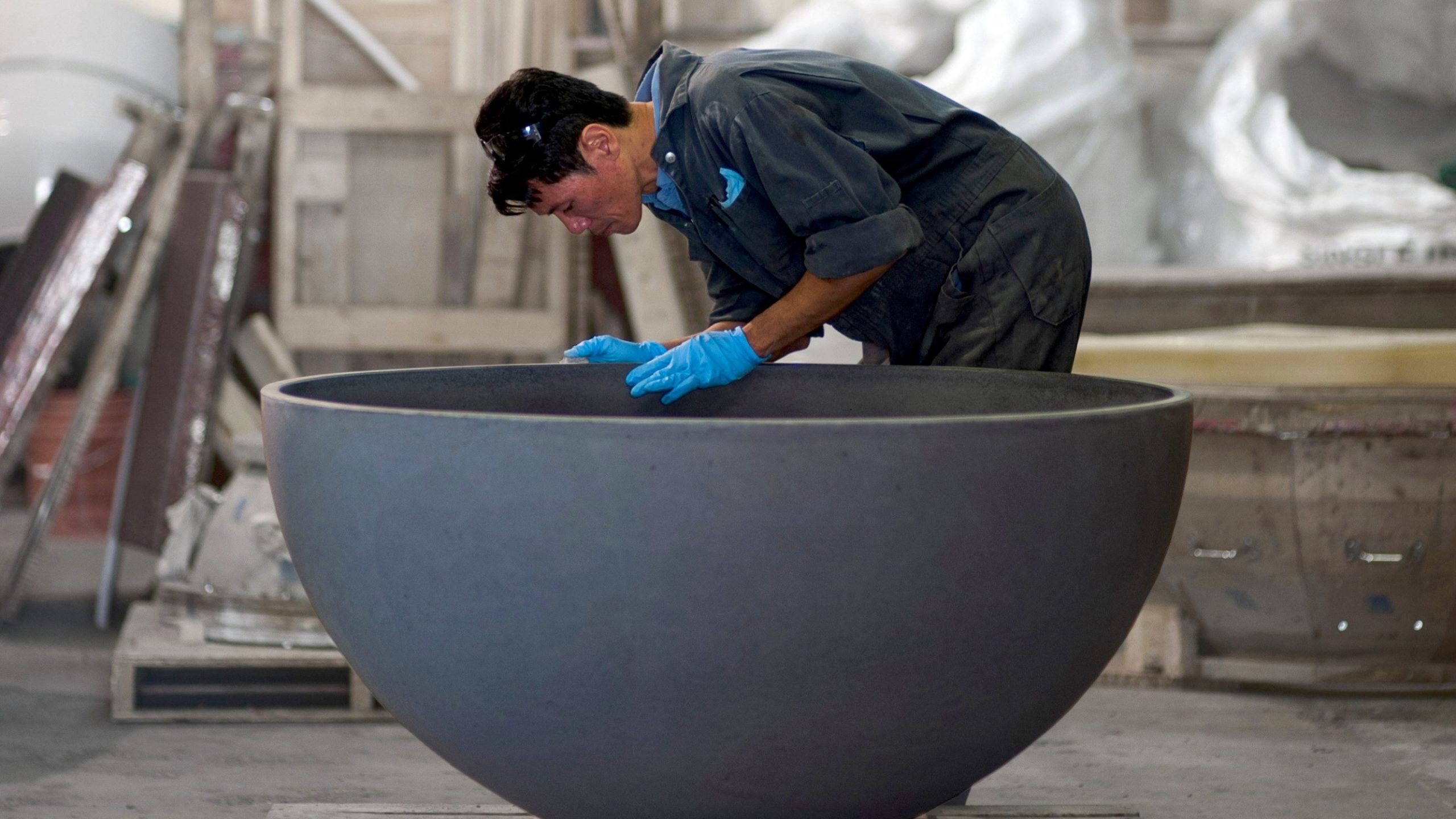
Concrete technology is vast and the American Standards Testing of Materials (www.astm.org) and is an international standard for the testing of concrete amongst many other construction materials. More specifically, we test to ASTM C39 standards that involve a compressive strength test. This test measures the compressive strength of the concrete and its ability to resist penetration of fluids. Logically, this is very important when it comes to designing modern outdoor fire and water features.
Compressive strength is a critical property of concrete, indicating its ability to withstand axial loads or forces pushing the material together. Therefore, it is key to determining the concrete’s durability and suitability for various applications particularly in outdoor applications where freeze thaw cycles are common.
Compressive Strength:
Solus UHPC is renowned for its exceptional compressive strength, often exceeding 10,000 psi (pounds per square inch). This remarkable strength is attributed to its meticulous formulation, which includes a high concentration of fine materials and fibers. Moreover, ASTM C 39 standards have been confirmed and tested at Metro Labs Burnaby British Columbia Canada. https://metrotesting.ca/
Finish Quality:
The finish quality of Solus UHPC is equally impressive and has been called inimitable by many of our clients, as it is what they see that matters most to them. Our concrete boasts a smooth, refined surface that enhances the aesthetic appeal of our products’ architectural and design elements. Fine aggregate and precise manufacturing contribute to a polished and sophisticated finish almost like a well worn leather. Due to precise molding, we are able to create a mirror finish of the original mold. Of particular note are the rims of our fire bowls and the edges of our fire tables. These are crisp and sharp, without exposed aggregate like GFRC or construction concrete. In addition, our fire features are cast in one casting ensuring the color is uniform, without mottling and large pitting
GFRC on the other hand is a layered approach. The outer layer is sprayed or rolled in place and then additional layers are applied. Furthermore, GFRC often fails in the field as these layers can peel off or shale (dislodging from the surface). Especially in climates that go through freeze thaw cycles. Moreover, the edges of these GFRC fire bowls are often chunky, rough, pitted and the surface is frequently patchy or mottled.
Applying a surface layer of patching after the GFRC product has been taken out of the mold is never as good as casting it correctly the first time. Consequently, GFRC is more suited to architectural elements that aren’t subject to outdoor wear and tear. The layering or back filling of the GFRC is often what “shales or flakes off as soon as it gets wet causing water to get between the surface layer and the core of the concrete vessel itself.
For instance, this review was left about a common GFRC fire pit manufacturer:
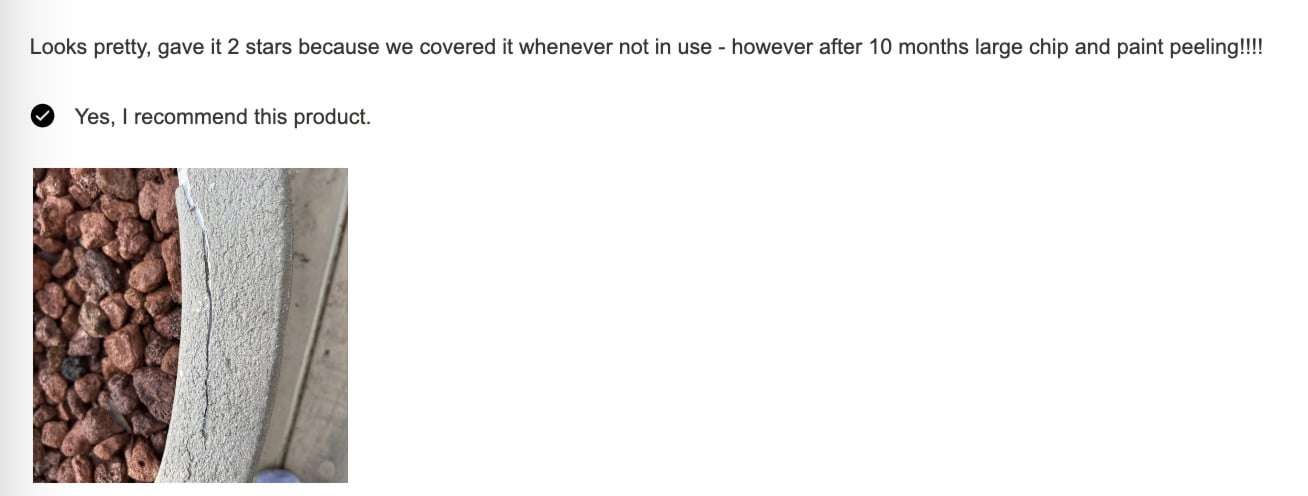
Benefits:
The high compressive strength of Solus UHPC makes it ideal for a range of applications, including architectural elements, structural components, and outdoor features like fire and water bowls. Its durability and resistance to environmental factors, combined with a premium finish, are notable advantages.If you read many of Solus fire pit google reviews you will hear comments from clients who say the product looks just the same as when they bought it 8, 10 or even 12 years ago.
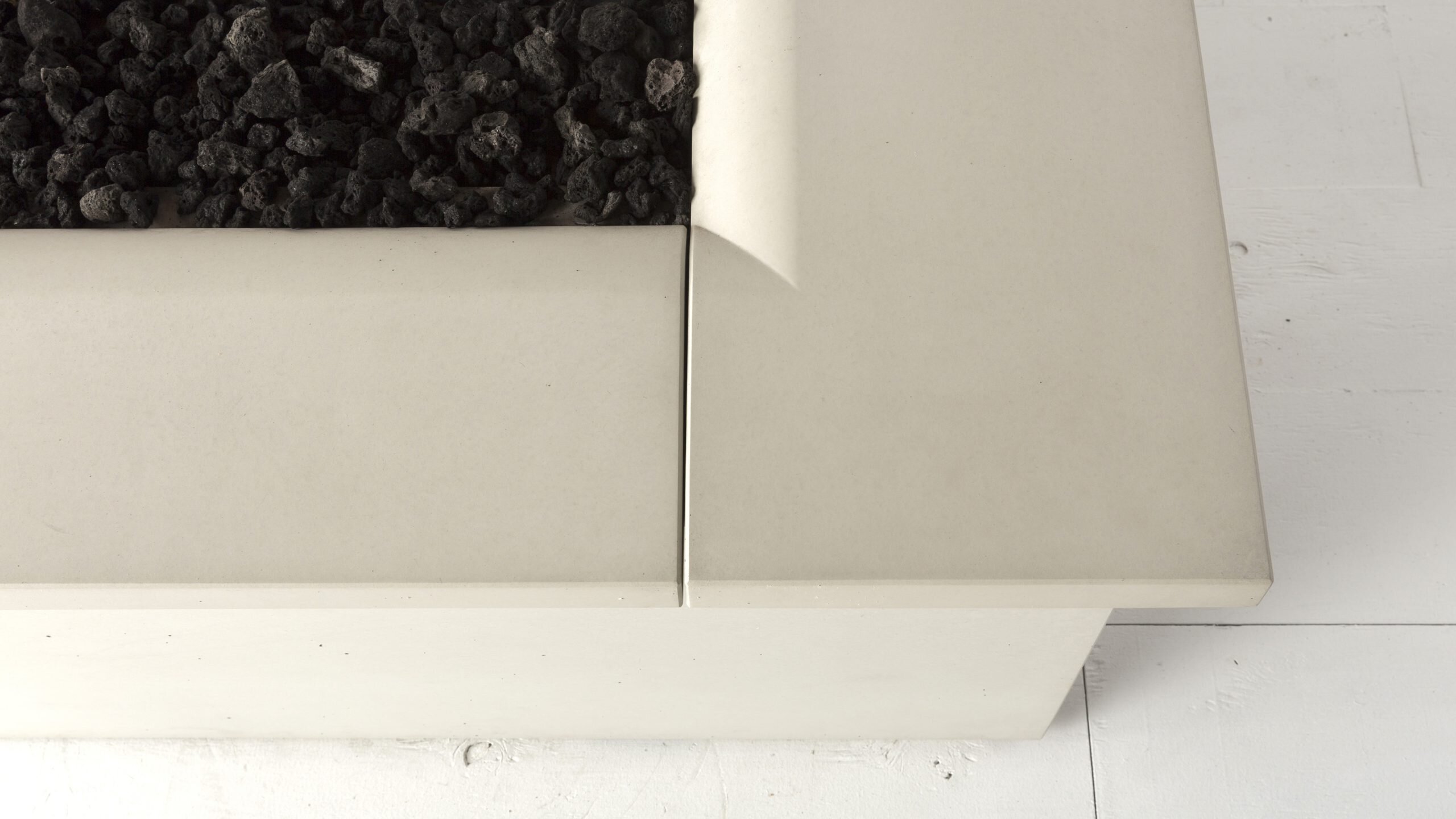
Compressive Strength:
GFRC generally exhibits lower compressive strength compared to Solus UHPC. It typically ranges from 4,000 to 6,000 psi, depending on the specific mix and manufacturing process.
Finish Quality:
The finish quality of GFRC is often more textured than that of Solus UHPC. While it can be smooth, the inclusion of glass fibers may result in a coarser surface. The finish is still good where a more textured appearance is desirable.
Benefits:
GFRC’s advantages lie in its lighter weight, making it suitable for applications where reduced load-bearing capacity is acceptable. It is often chosen for decorative elements, cladding, and panels due to its versatility in design and fabrication.
Design Flexibility:
For projects where design flexibility and reduced weight are priorities, GFRC offers a broader range of aesthetic possibilities while still providing reasonable compressive strength.
Finish Quality:
Solus UHPC stands out in terms of a refined and polished finish, perfect for applications where a premium aesthetic is crucial. GFRC offers a textured finish, suitable for projects that embrace a more natural or rustic appearance.
Environmental Factors:
Consider the environmental conditions your concrete elements will face. Solus UHPC’s resistance to harsh weather and durability makes it suitable for outdoor applications, while GFRC may be more suitable for indoor or less demanding outdoor environments.
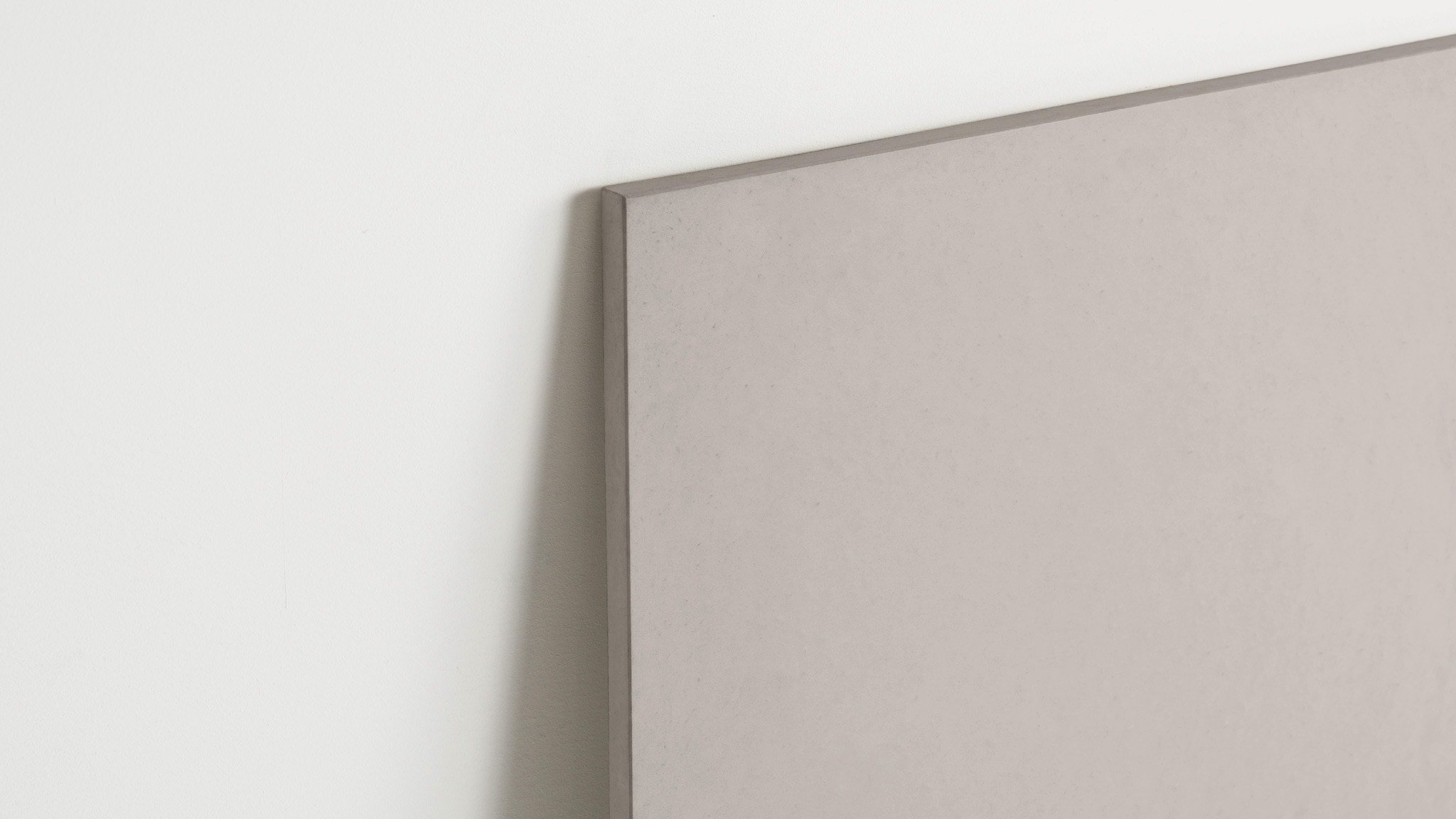
When comparing Solus Ultra High Performance Concrete (UHPC) and Glass Reinforced Concrete (GFRC), compressive strength and finish quality reveal distinct advantages that each material offers. While Solus UHPC excels in outdoor applications like fire pits and water features with its exceptionally high compressive strength and premium finish, GFRC provides a lighter alternative with design versatility and a textured aesthetic. Choosing between the two will ultimately depend on the specific requirements of your project, balancing strength, weight, finish quality, and design considerations.
Get in contact with the sales team to find out more about our products
contact us at 1-877-843-0572


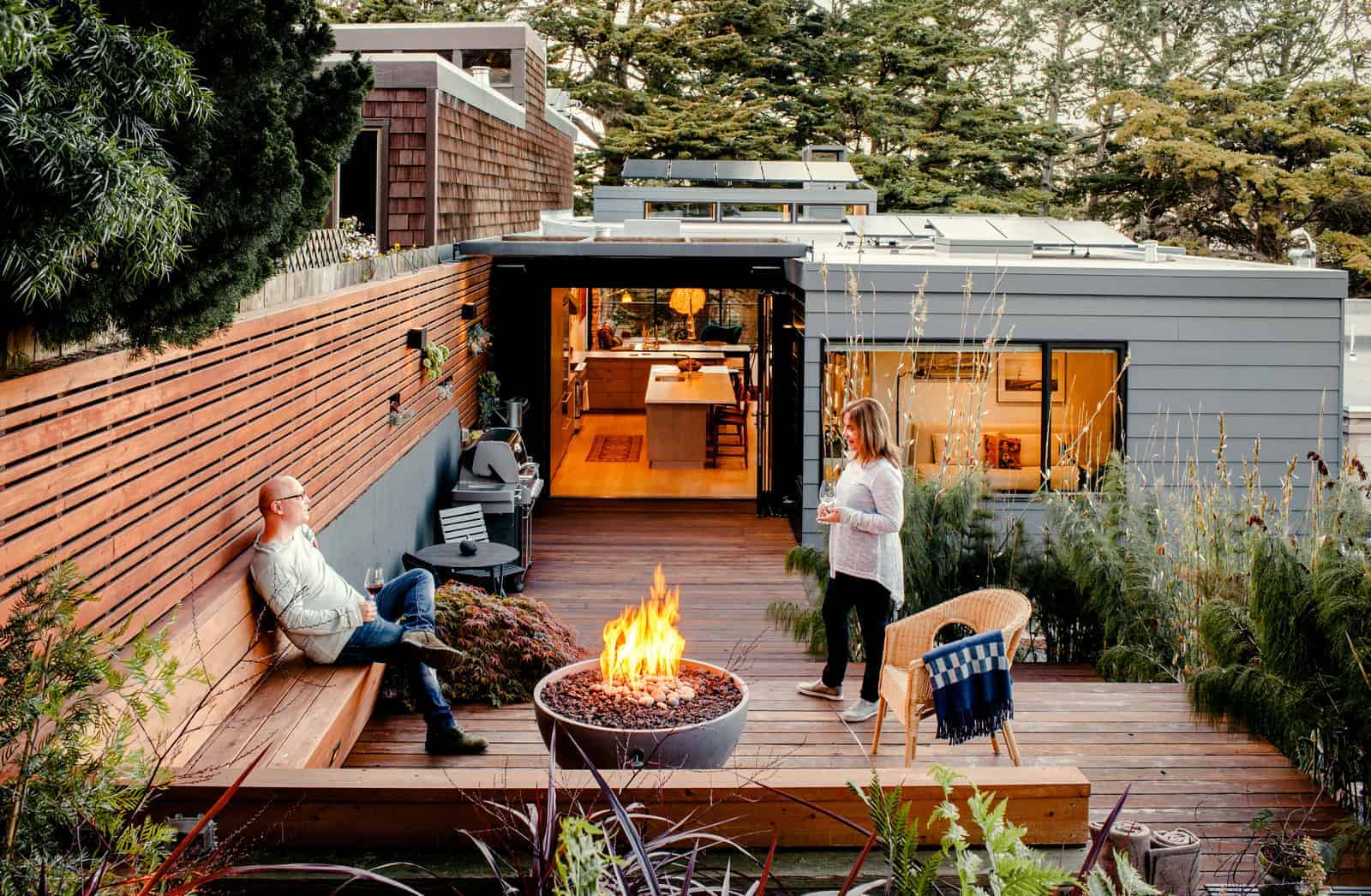







109 Braid Street – Building C
New Westminster, BC
V3L 5H4
Canada
Solus Decor Spain S.L.
Calle Canet d’En Berenguer,
16 Sagunto 46500
Valencia, Spain
Cedar Nursery
Horsley Road
Cobham, Surrey, England
KT11 3JX